SOURCE: https://thenarwhal.ca/bc-tour-boat-operators-clean-up-ocean-debris-coronavirus/
Kevin Smith stands at the helm of his 42-metre luxury catamaran Cascadia, sailing north from Vancouver Island to the central coast of B.C. and the Great Bear Rainforest. On a typical trip, he would be guiding 24 guests on a week-long ecotourism expedition, sharing his love and intimate knowledge of the rugged B.C. coast — its wildlife, history and culture.
Today, Smith, co-owner of Maple Leaf Adventures, has no guests. Instead, he’s joined by eight other boats with a total of more than 100 crew members as he embarks on the second three-week expedition to clean up remote areas of the coastline supported by the B.C. government’s Clean Coast, Clean Waters Initiative Fund.
The project sustains ecotourism businesses as they navigate the devastating effects of the pandemic while protecting the ecosystems they rely on. Five companies from the Small Ship Tour Operators Association are involved in the clean-up.
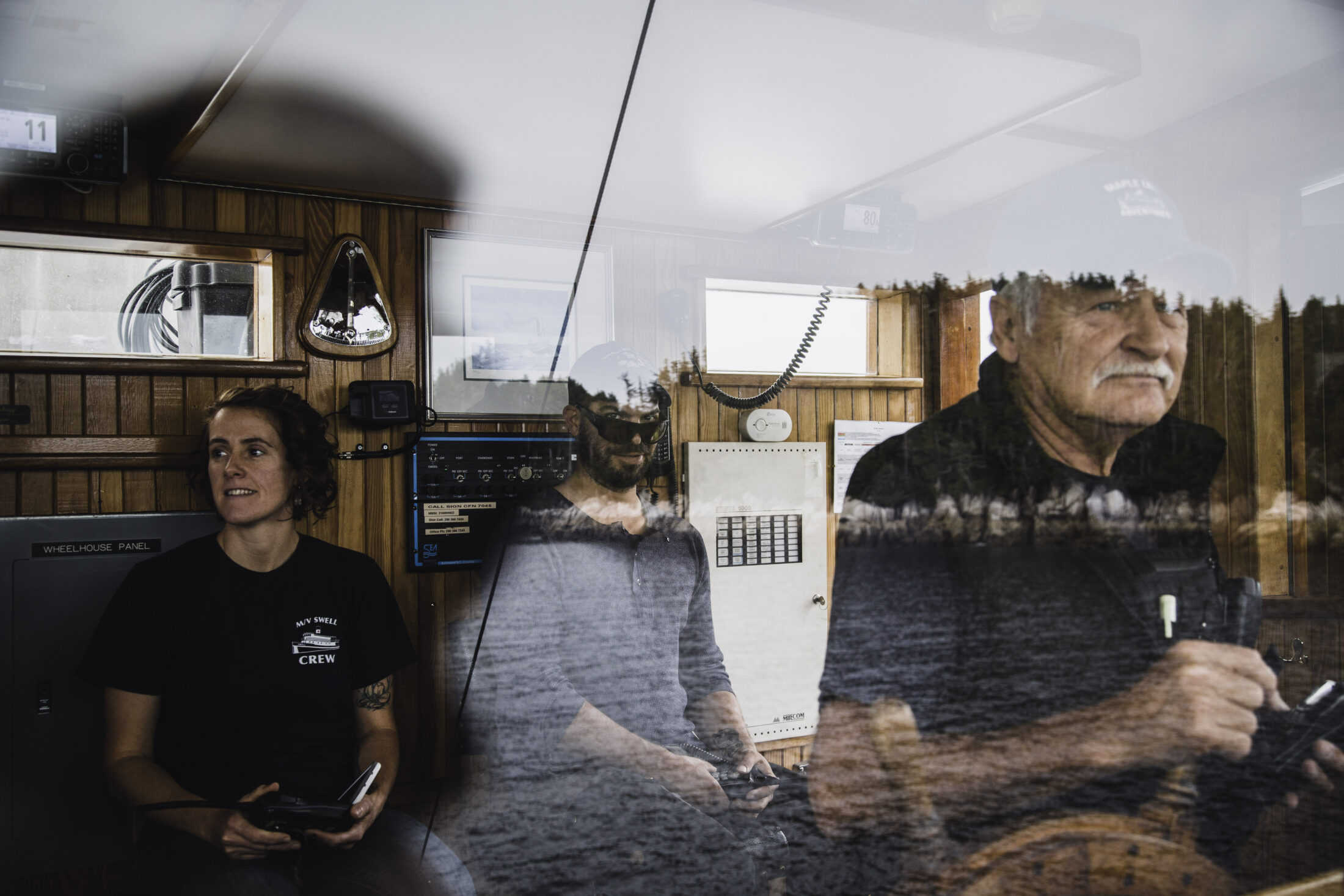
Crew members head out to collect debris. Photo: Simon Ager
The province contributed $3.5 million to fund the project. The expeditions involve collecting debris on the coastline, using a helicopter to transfer the debris to a barge and shipping the debris to Vancouver Island for recycling and disposal.
The first expedition, which was also to the central coast, wrapped up Sept. 7. In total, 61 tonnes of garbage were removed.
“The first expedition was way more successful than anybody dared to imagine it could be in terms of finding ocean debris,” Smith says via satellite phone. “It was quite startling to us, just the sheer volume and tonnage of debris that we were able to find and get onto the barge and off the coast.”
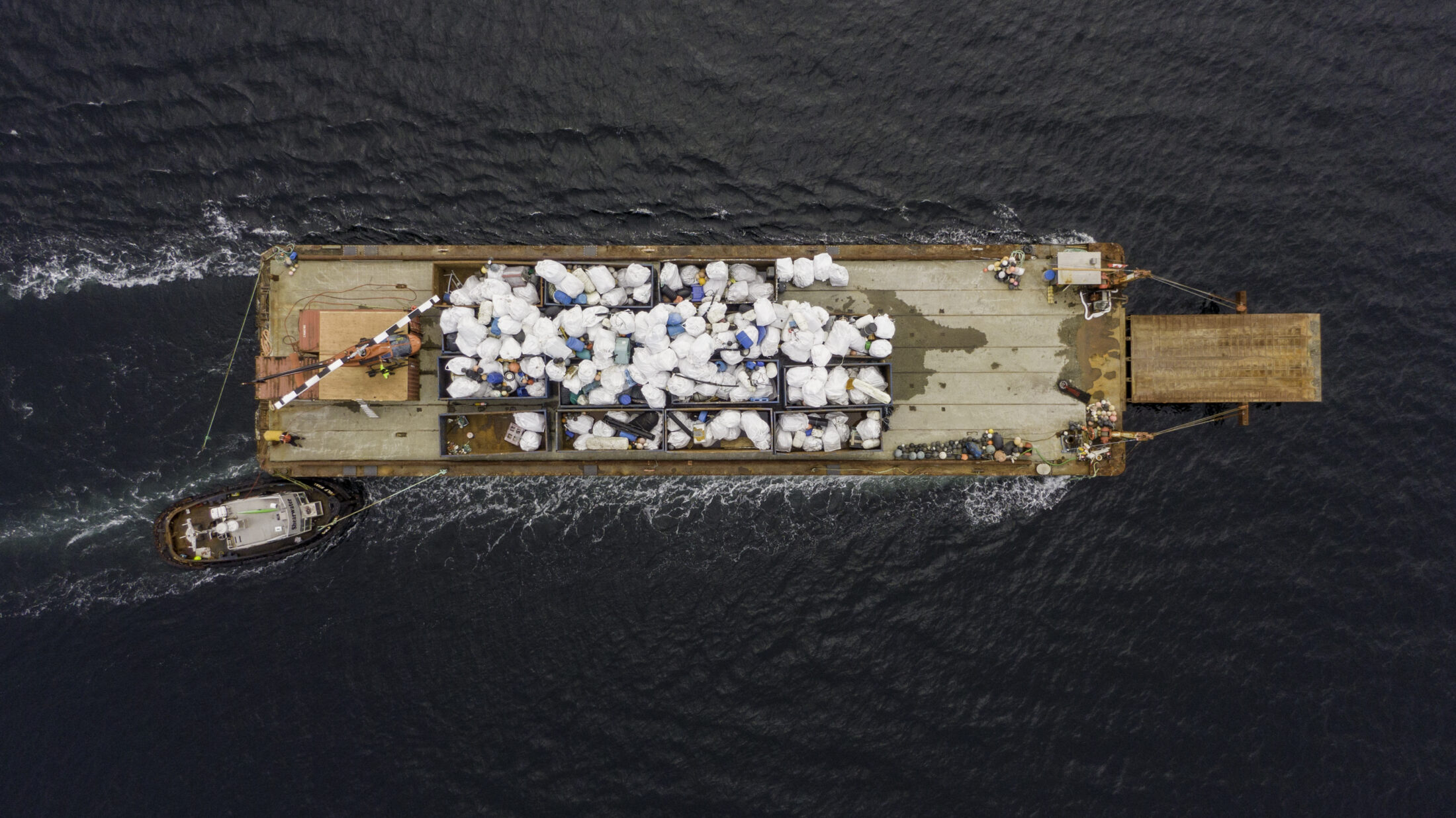
Debris is shipped down the coast on a barge. Photo: Simon Ager
Ocean debris poses serious threats to marine life
In 2019, B.C. Premier John Horgan asked Parliamentary Secretary for Environment Sheila Malcolmson to find solutions to the issues of abandoned vessels, marine debris and ocean plastics. To better understand these issues, she travelled along the coast, meeting with local governments, First Nations, industry and environmental organizations. The message she heard was clear: “People in British Columbia want action to stop ocean plastics from polluting their communities and shorelines,” she said in a statement to The Narwhal.
In a report on her findings published in February, the province highlighted the primary sources of the pollution, including mooring buoys, fishing gear, aquaculture debris and polystyrene foam used for marine infrastructure such as docks and aquaculture facilities.
Fishing debris, whether lost or abandoned, poses a serious threat to marine mammals such as whales. According to the Marine Education and Research Society, there are currently three humpback whales known to be entangled off the coast of B.C. On Sept. 10, a fourth entangled whale, named Checkmate, was confirmed to be free through drone footage.
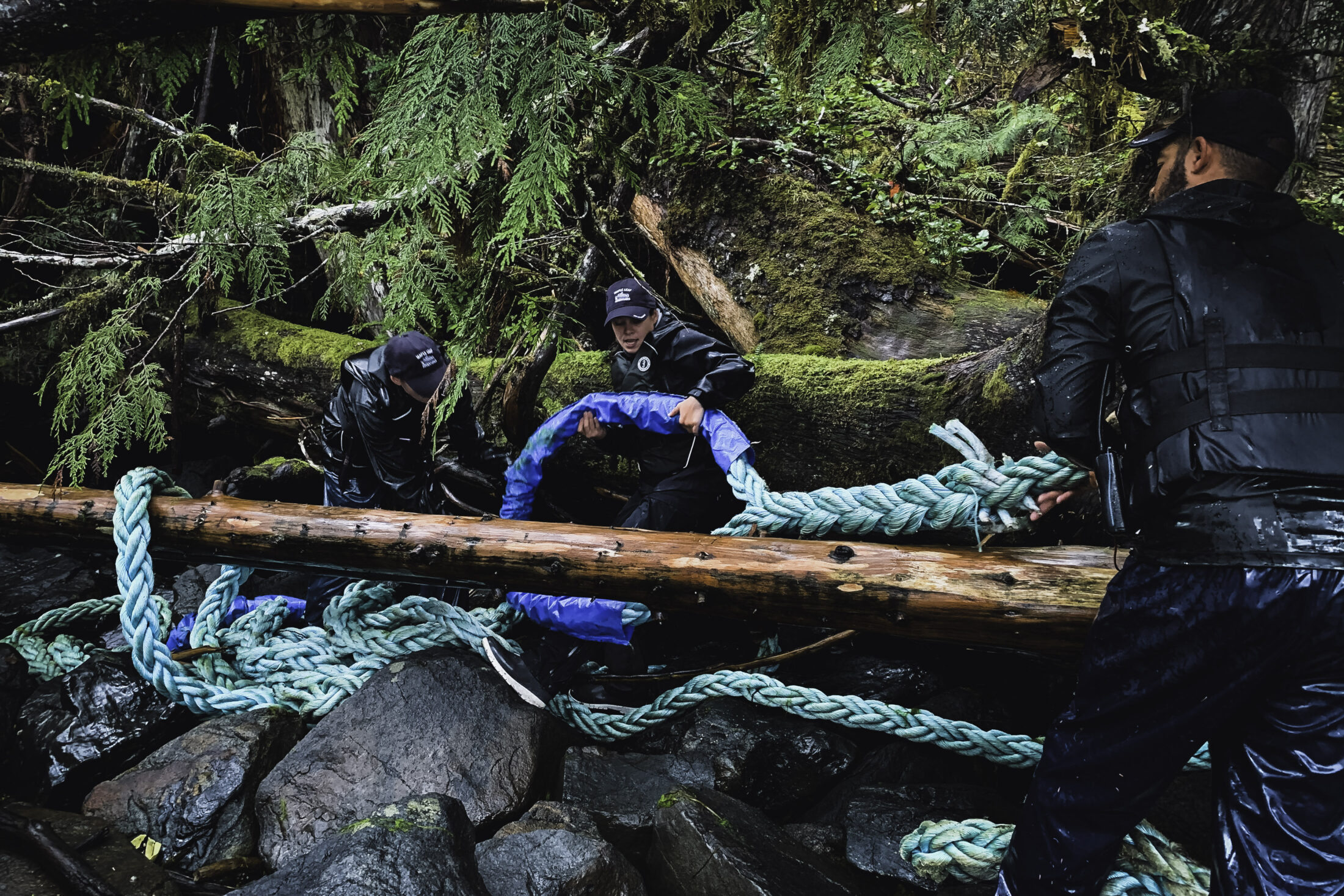
About 70 per cent of what crew members collected on the first expedition was fishing gear. Photo: Simon Ager
Entanglements can wound or kill whales. Fisheries and Oceans Canada says nearly half of all humpbacks they’ve identified in the province have scars from entanglements. For ecotourism operators on B.C.’s coast, whales are one of the selling points. “Our peak experience for our guests is usually around wildlife viewing,” Smith says.
Plastic pollution also poses serious problems. Plastics break down into smaller pieces, eventually ending up as microplastics, which make their way into the food chain as fish and seabirds eat them. Microplastics can’t be digested, so they stay in the animals’ guts and are starting to show up in humans.
Some marine animals — including endangered and threatened species — also ingest larger pieces of plastic. Last year, a sperm whale was found dead on a Scottish beach with over 200 pounds of debris in its guts, including plastics and rope. Recent research shows that loggerhead turtles mistake plastics for food. Studies have also shown that up to 90 per cent of seabirds are ingesting plastics.
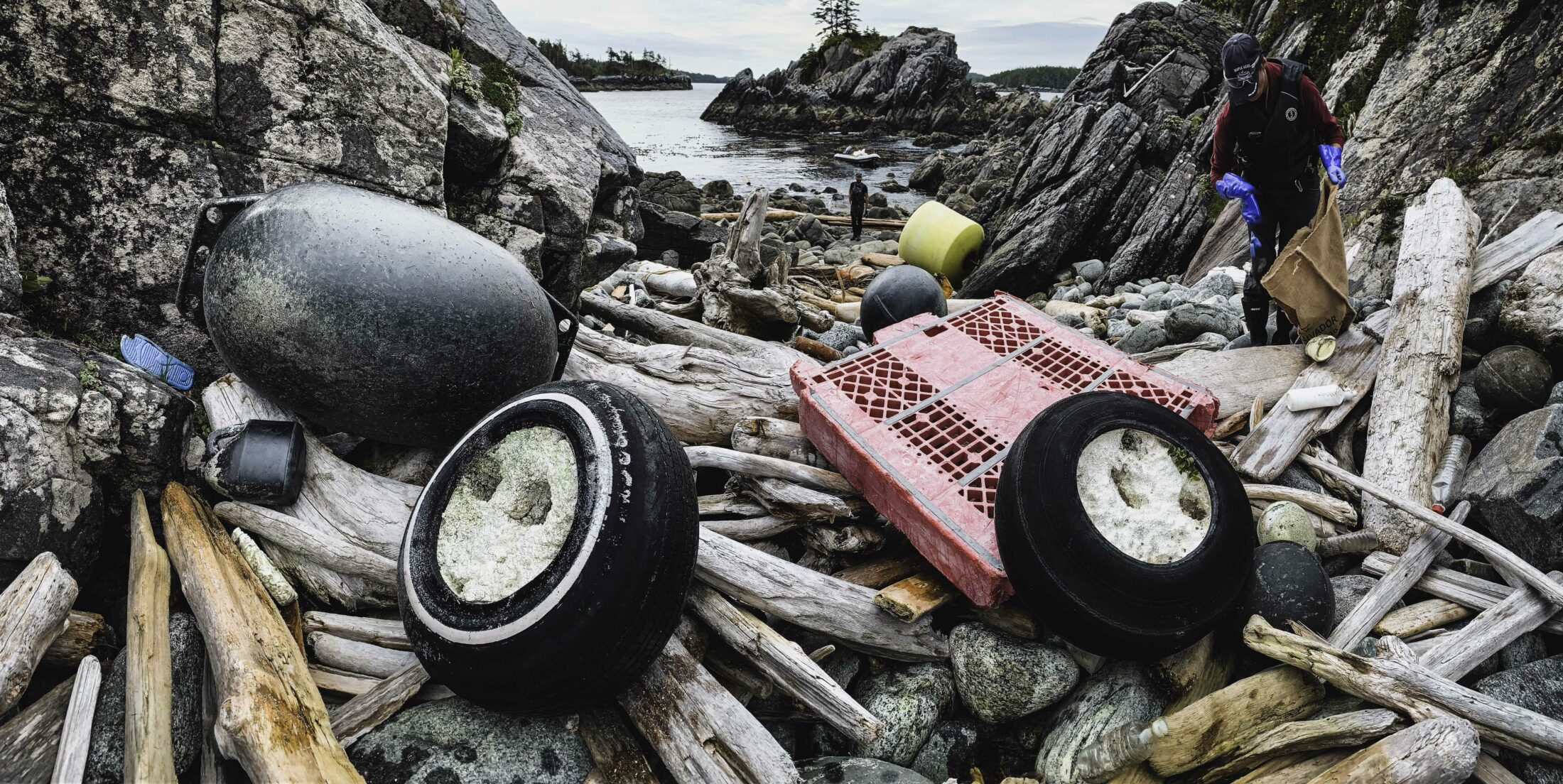
The clean-up was on an industrial scale, but crew members did find some smaller items, such as flip-flops, seen on the left. Photo: Simon Ager
Debris in the marine environment is also changing the way species travel through the world’s oceans. After the 2011 Japanese earthquake and tsunami, nearly 300 small marine species, including 30 known invasive species, ended up in North America after travelling on marine debris, such as buoys and broken boats, across the ocean.
The province’s report on ocean pollution emphasized the need for providing funding and creating better systems for recycling and disposal. It also recommended prioritizing education and outreach and developing better regulations and enforcement procedures to prevent debris from getting into the marine environment. Cleaning up the debris that’s already out there is a first step toward reaching a solution.
Positive solutions for negative times
As Smith prepares to cross Queen Charlotte Sound at the north end of Vancouver Island, he explains that decades ago he worked on a large-scale beach clean-up on Cape Scott. When COVID-19 forced his company to cancel all the trips that were booked for the year, he thought back to that experience.
“I was genuinely worried about how we were going to survive,” he says. “And I was thinking, what can we do that’s positive in this world in such a negative time for our company? I recalled how good it felt to be part of that clean-up.”
Smith roughed out his ideas for the project and took them to his colleague, marine ecologist and founder of Outer Shores Expeditions Russell Markel. “Russ was the first one to see the vision and say, ‘Yeah, I think we could do that.’ ”
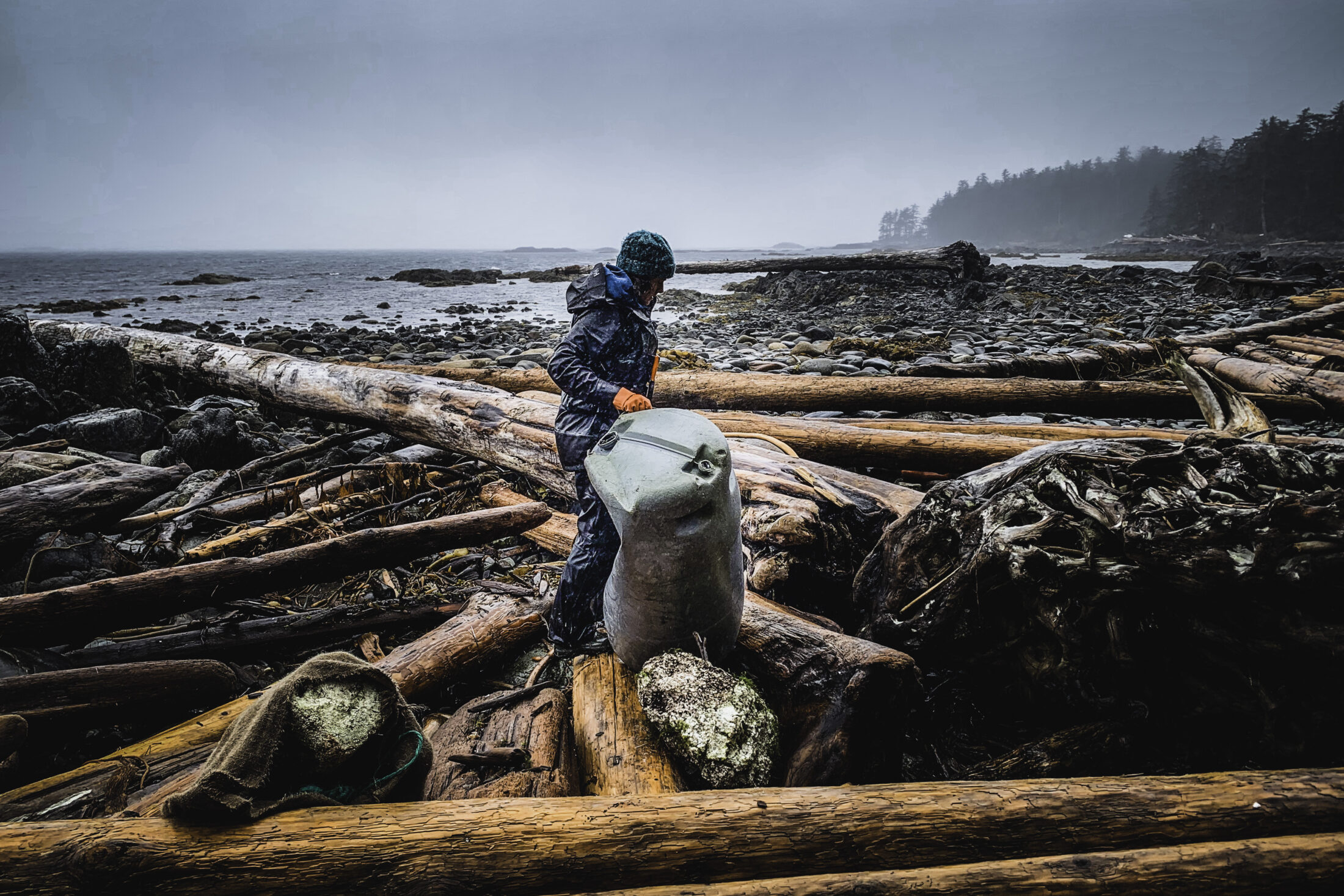
Crew members faced harsh weather during the clean-up. Photo: Simon Ager
The two worked on a plan together and proposed it to other tour operators. The group then took the proposal to the Kitasoo/Xai’Xais, Heiltsuk, Gitga’at, Wuikinuxv and Nuxalk First Nations to get support and permission to conduct the operation. With the support in hand, they requested funding from the province and received it through the Clean Coast, Clean Waters Initiative Fund.
“We have this year where we can get out there and try to make the coast a cleaner place and get rid of decades and decades of all this plastic debris,” Smith says.
Tour guides use intimate knowledge and technical skill
Most of B.C.’s exposed coastline is rugged, remote and subject to dramatic weather conditions. Cleaning it up requires knowledge of the area, technical skill, good timing and extremely hard work.
“We weren’t really sure how we were going to deal with it once we got there,” says Neil Shearar, lead captain with Bluewater Adventures. “We went to lots of different stores, bought equipment, saws, things to chop things and things to carry things.”
Smith emphasizes that the project is not like gathering litter. “This isn’t walking down beaches and picking up a chip bag or something,” he says. “This is on an industrial scale, in really harsh environments.”
The logistics of tackling a clean-up operation in such remote locations are complex. As storm after storm bashes into the land, debris is thrown up into the forest.
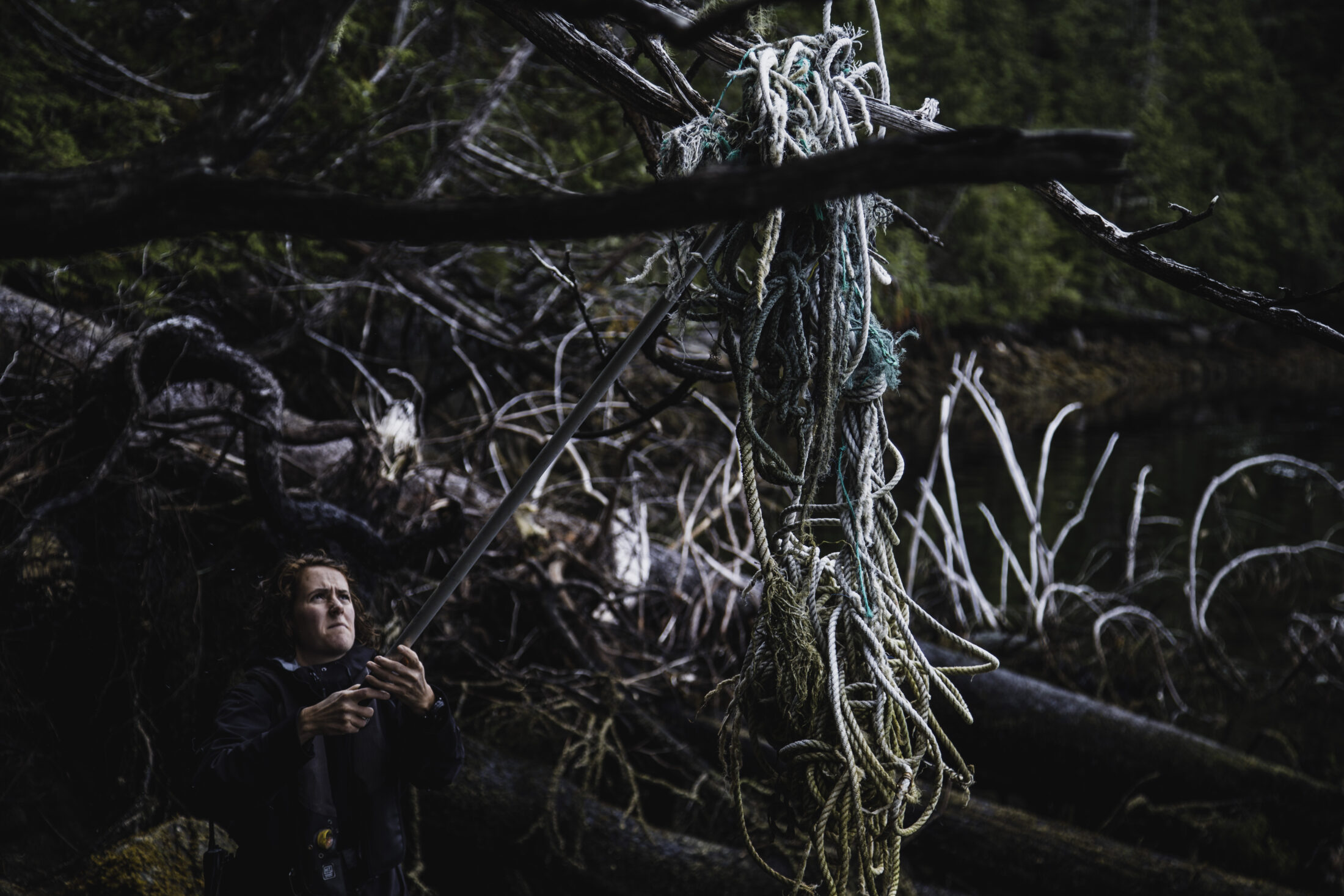
Storms throw debris, like this tangle of ropes, into the forest. Photo: Simon Ager
To get to all this garbage, crew members first have to get onto the land — and even that can be challenging. They launch zodiacs from the larger ships and when they get close they have to jump onto the slippery rocks. Once on land, the clean-up crew often has to climb over piles of wet, slippery logs, a ubiquitous feature on the coast. Finally, they get to the debris, but then they have to load it all into massive bags that are later lifted by helicopter to a barge.
“It’s backbreaking work,” Smith says. “We had to work hard and fast and exhausted ourselves, working way longer hours than we said we’d be working — because we were totally inspired to get this work done.”
Despite the extra hours and hard work, they still couldn’t reach all of the areas they originally targeted and have had to scale back plans. “Instead of spending the day clearing the whole beach, you could spend the whole day on just one net or a pile of rope,” Shearar says.
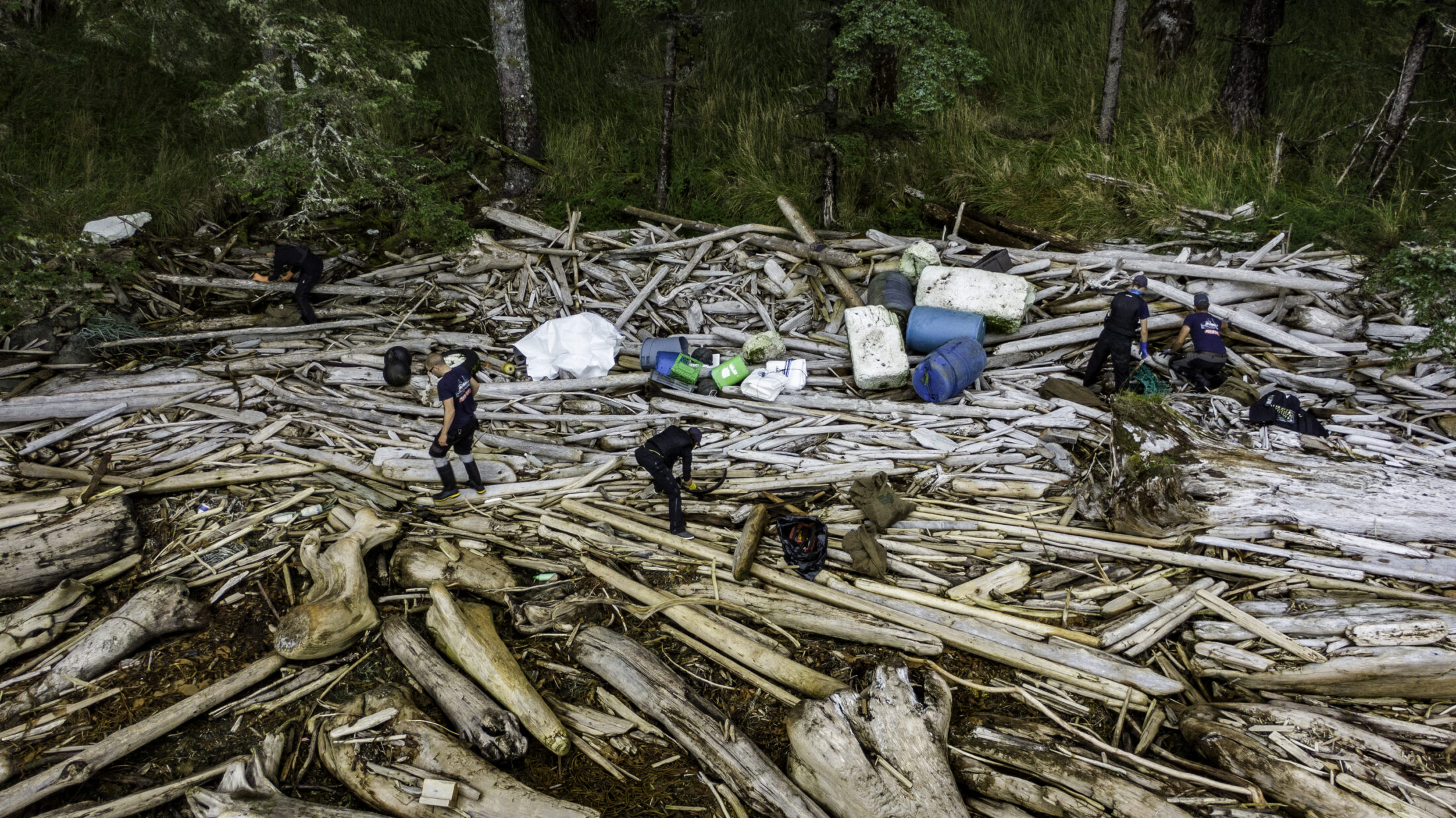
Crew members climb over piles of slippery logs to get to debris. Photo: Simon Ager
Majority of debris is fishing gear
Not only were they surprised by how much debris they found, they were also surprised by what they found.
“You go there thinking you’re gonna go and pick up a bunch of plastic bottles … and all of a sudden you’re finding this stuff that’s on a massive industrial scale,” Shearar says. “You’re finding stuff that’s really pretty horrific in a sense, and in places that you thought were so remote and untouchable.”
He gave an example of finding a 100-metre PVC pipe, half-buried and filled with sand. Crews had to cut it into manageable pieces to remove it from the shore.
“There’s all sorts of weird and wonderful items being tossed off ships at sea, or lost in storms,” Smith says. “We found two small freezers — maybe they’d been lashed on a ship or maybe it was from the tsunami in Japan. They were full of insulation, so they float.”
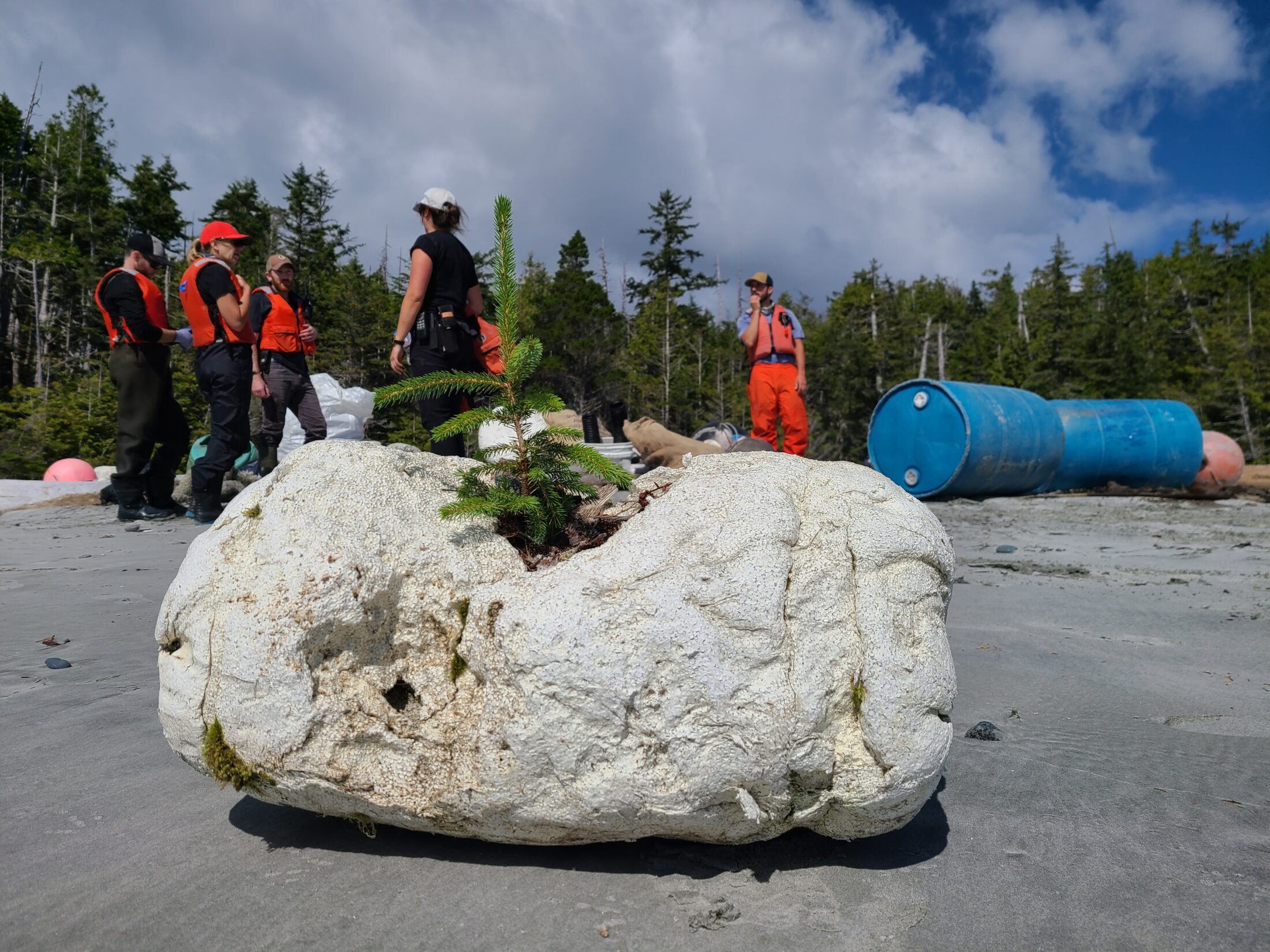
Some ocean debris has been on the coast for so long, it’s become a mini-ecosystem. Photo: Bluewater Adventures / Eddy Savage
They also found a few shipwrecks and other oddities, but the vast majority of the debris collected was fishing gear.
“Mostly it’s just plastic, styrofoam and tons and tons of fishing equipment. Like 70 per cent of what we’re finding is industrial fishing debris, and most of it is international.”
Shearar was shocked by the amount of fishing gear they found. “I’m a mariner and I’m out there looking at it and going, ‘Wow, are we that disrespectful of the space we occupy?’ I don’t want to think of mariners as being that way. I work in an ecotourism industry and we’re constantly vigilant relating to what our impact is, but it’s disturbing to think that others may not be operating anywhere near that sort of level of awareness.”
He added that we all have a role to play in keeping the shoreline clean. “It’s all of us. It’s everybody who uses plastics all the time. We have to figure out how to not be wasteful like we are.”
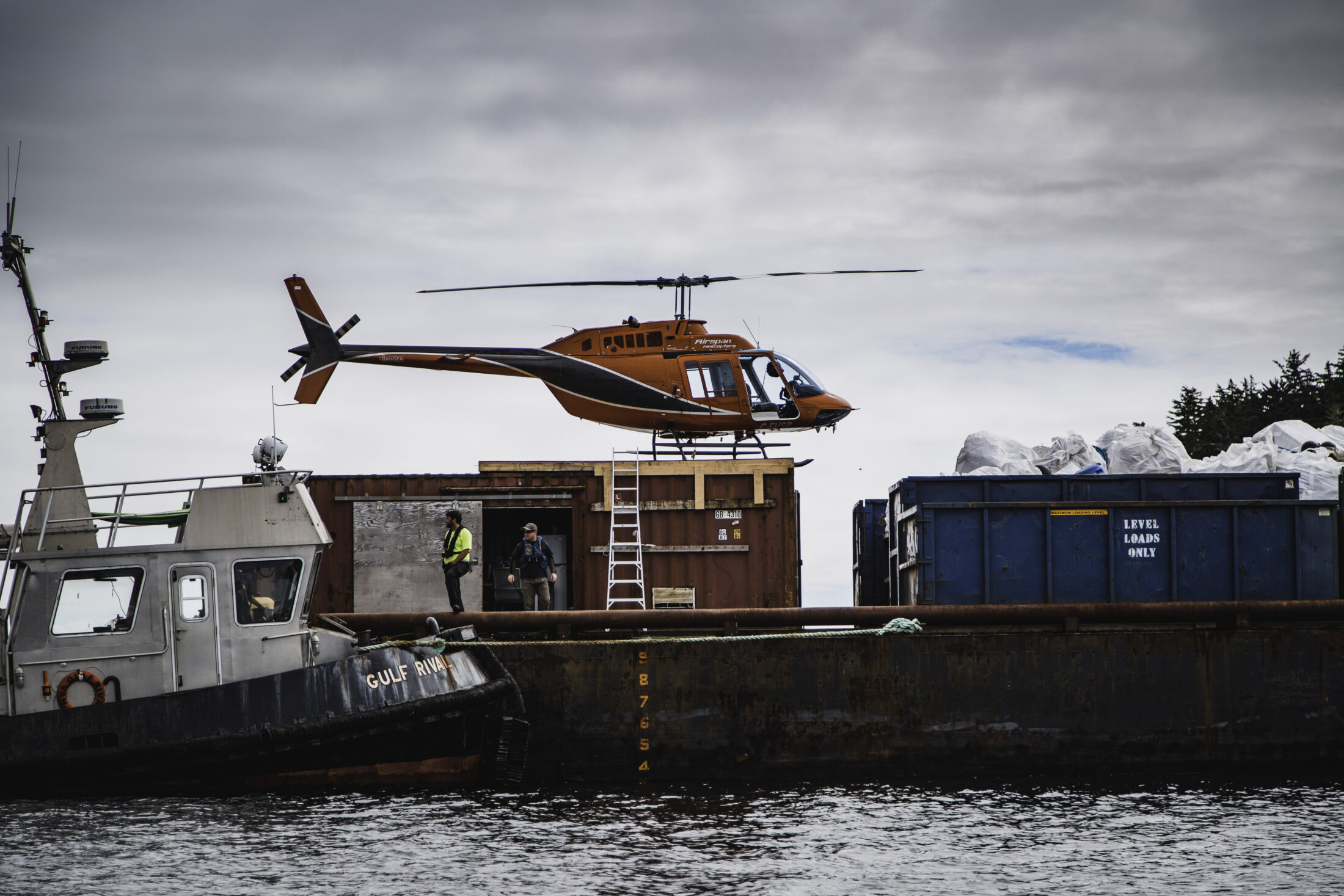
A helicopter delivers debris to a barge to be shipped down the coast. Photo: Simon Ager
Heiltsuk reuse debris in sustainable fishery
Not all of the debris the crew members collect is garbage.
One of the items they found in large quantities is a dragger ball, a fishing float about the size of a basketball, used in offshore fisheries.
Dragger balls are also used in a Heiltsuk fishery. “They’re considered just the absolute best float for the Indigenous spawn-on-kelp fishery,” Smith says.
A traditional First Nations fishing practice, spawn-on-kelp involves suspending weighted strands of kelp underwater for herring to lay their eggs on. It’s a sustainable practice as the fish live on to spawn again or become food for other marine species. Spawn-on-kelp is also a healthy food source for the Heiltsuk and an important part of the local economy as it is a delicacy in Japan.
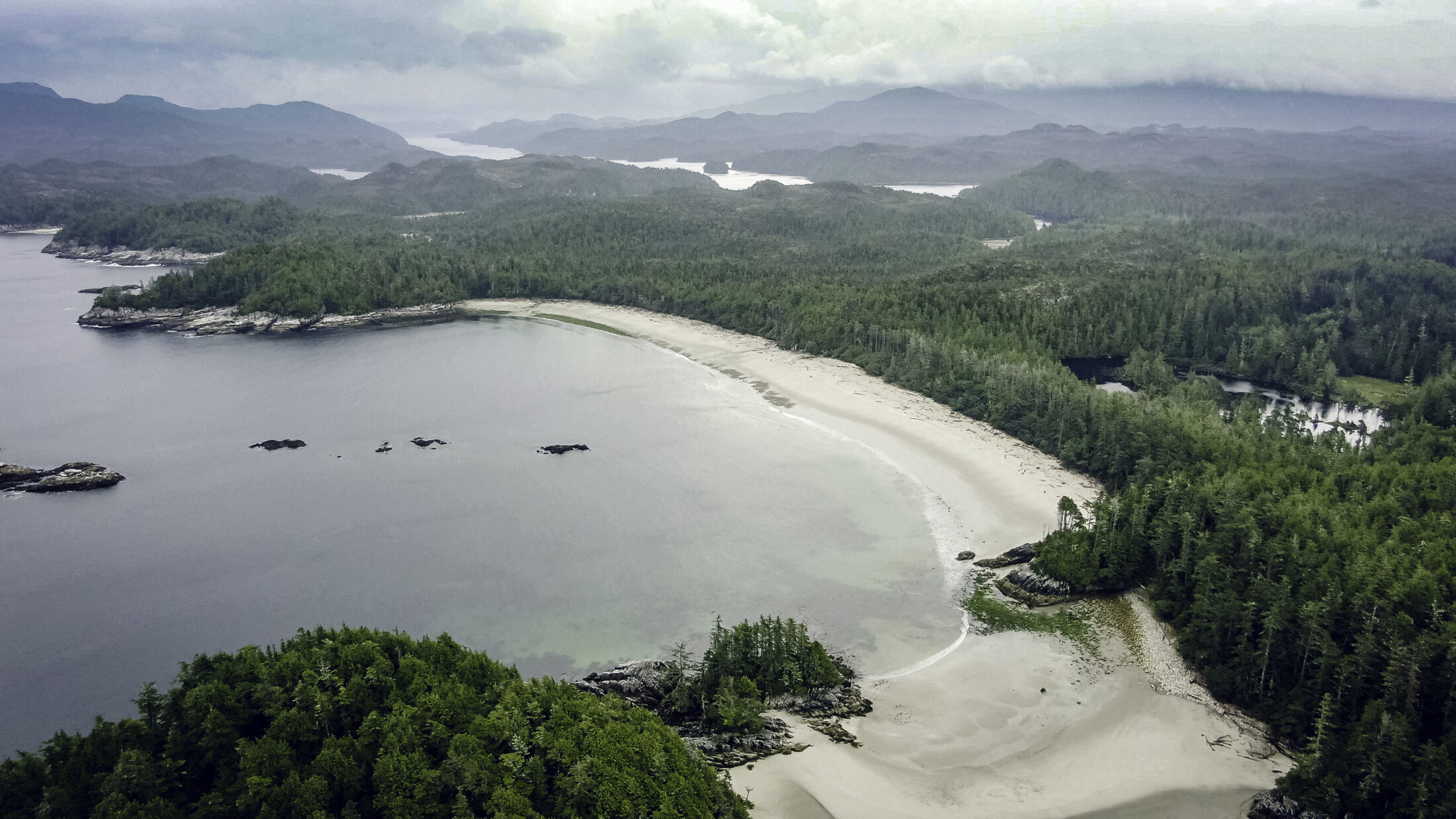
Crew members cleaned up West Beach on Calvert Island in Heiltsuk territory. Photo: Simon Ager
Smith contracted a Heiltsuk barge to use for the clean-up and some eagle-eyed workers spotted the floats.
“The guys on board, of course they live in the community and they recognized these hundreds of dragger balls,” he says.
The barge operators brought the dragger balls back to their community, and the floats will be put aside for them on the second expedition.
Data on debris will inform future projects
As part of the clean-up, the crew is collecting data to hopefully inform future projects and promote awareness of the problem. This research component will provide valuable information on the sites that accumulate the most debris, the Ministry of Environment and Climate Change Strategy told The Narwhal in a statement.
“A final project report will include quantitative data, such as GPS coordinates for locations, number of beaches [and] kilometres covered and cleaned, volume of debris cleaned, key learnings, organizations and businesses involved, as well as photo evidence to support the work,” the ministry said.
In early September, the Coastal First Nations — an alliance of nine nations on B.C.’s central and north coast and Haida Gwaii — received $1.33 million from the province to continue the work of cleaning up the coastline. This initiative will focus on food gathering areas on the central coast and include training and education for Indigenous youth.
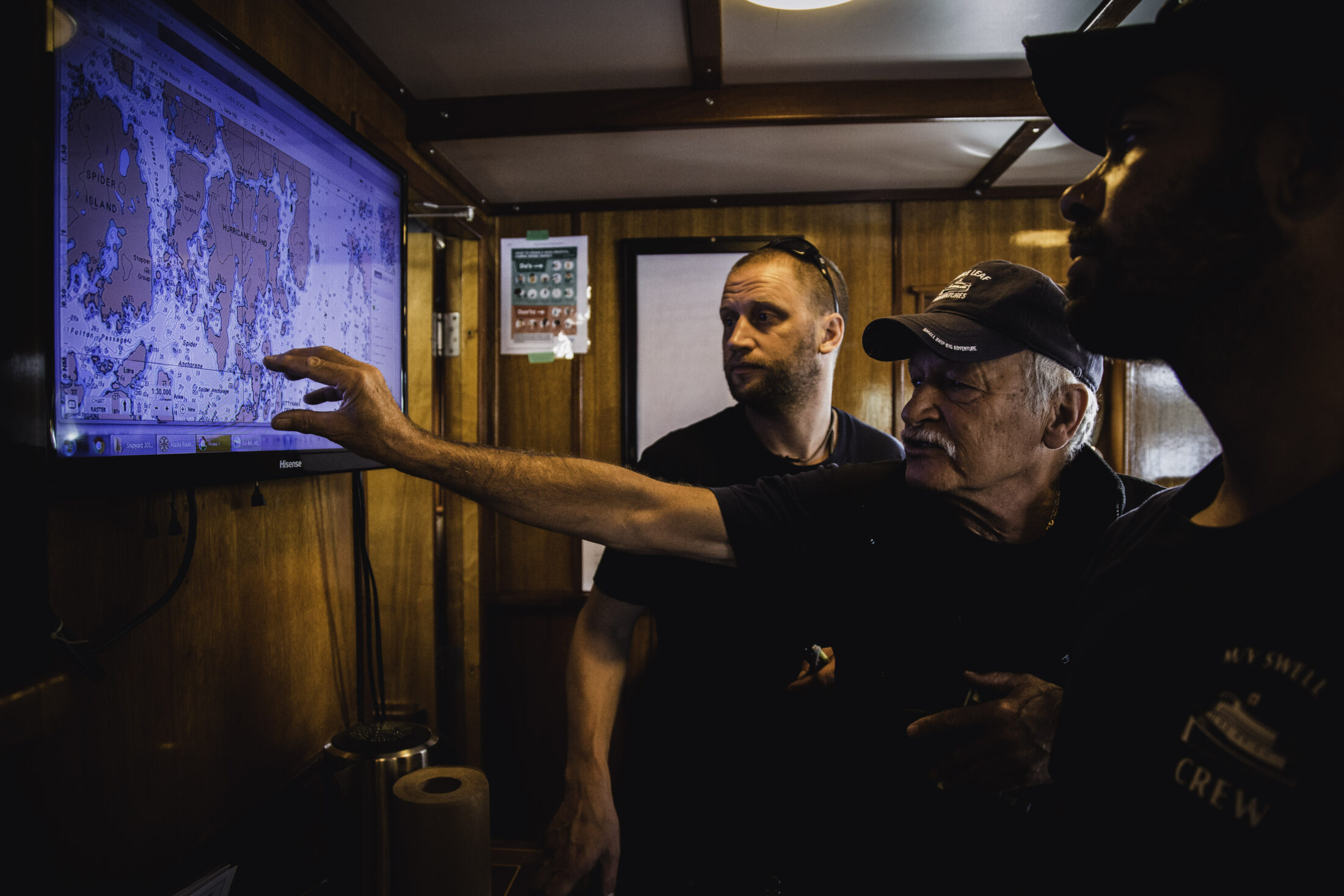
Crew members are collecting data on where debris is found to inform future efforts. Photo: Simon Ager
“Even if we only get 50 per cent of what’s out there, we will achieve something phenomenal,” Shearar says. “Let’s just get what we can, go for the low-hanging fruit, if you will. It’s such a sad thing that the situation is so horrendous.”
But both Shearar and Smith are hopeful that this project will act as an impetus to continue the work.
“We’ve got so many crew and captains and dedicated people that want to see this,” Smith says. “And when you’re working with people that are passionate and dedicated to the cause, you can push through any amount of hardship and any amount of long days — it feels good.”
Shearar agrees it was inspiring to see how motivated everyone was.
“You have to start. And that’s what this feels like to me. We were making a start.”